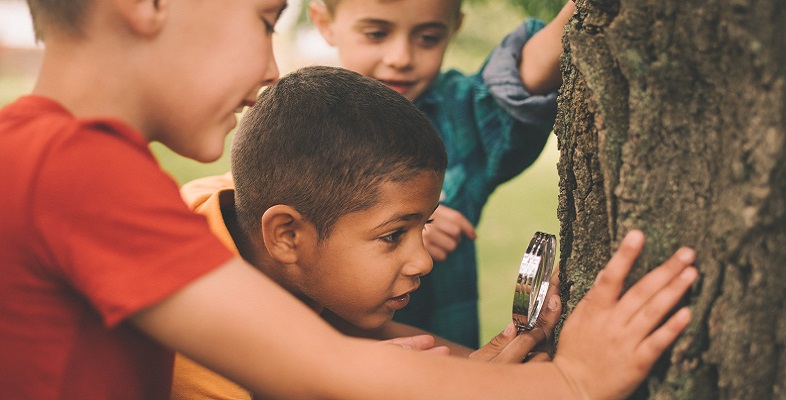2.1 Getting a sense of scale
In spite of ‘joined up’ planning in schools like Millersneuk Primary, children learn about different science topics in school as distinct blocks of work. One result of this is that the relative sizes of the things they’re learning about are not immediately clear to them. For example, consider how the girls in Figure 4 would know how the ladybirds in their ‘bug hotel’ compare to other objects such as a plant cell or the Earth in terms of scale.
Activity 4 Scale
Put the following in order of magnitude, from smallest to largest:
| ladybird | bacterium | the Earth | flea | galaxy |
| human being | atom | molecule | plant cell | proton |
| red blood cell | solar system | star | universe | virus |
Answer
The objects should be listed in the following order:
(smallest)
- proton
- atom
- molecule
Note: A micrometre (micron) is 1 millionth of a metre (note the English spelling). Protons, atoms and molecules are too small to be measured in this way.
- virus
- bacteria
- red blood cell
- plant cell
- flea
- ladybird
- human being
- the Earth
- star
- solar system
- galaxy
- universe
(largest)
Learning about these things as separate topics means children don’t get a sense of the size of things that cannot be seen by the naked eye, or are so large that size is just a number (a very large one). You can help children to get a sense of scale by including opportunities for them to think across topics, and supporting them to make meaningful comparisons.

